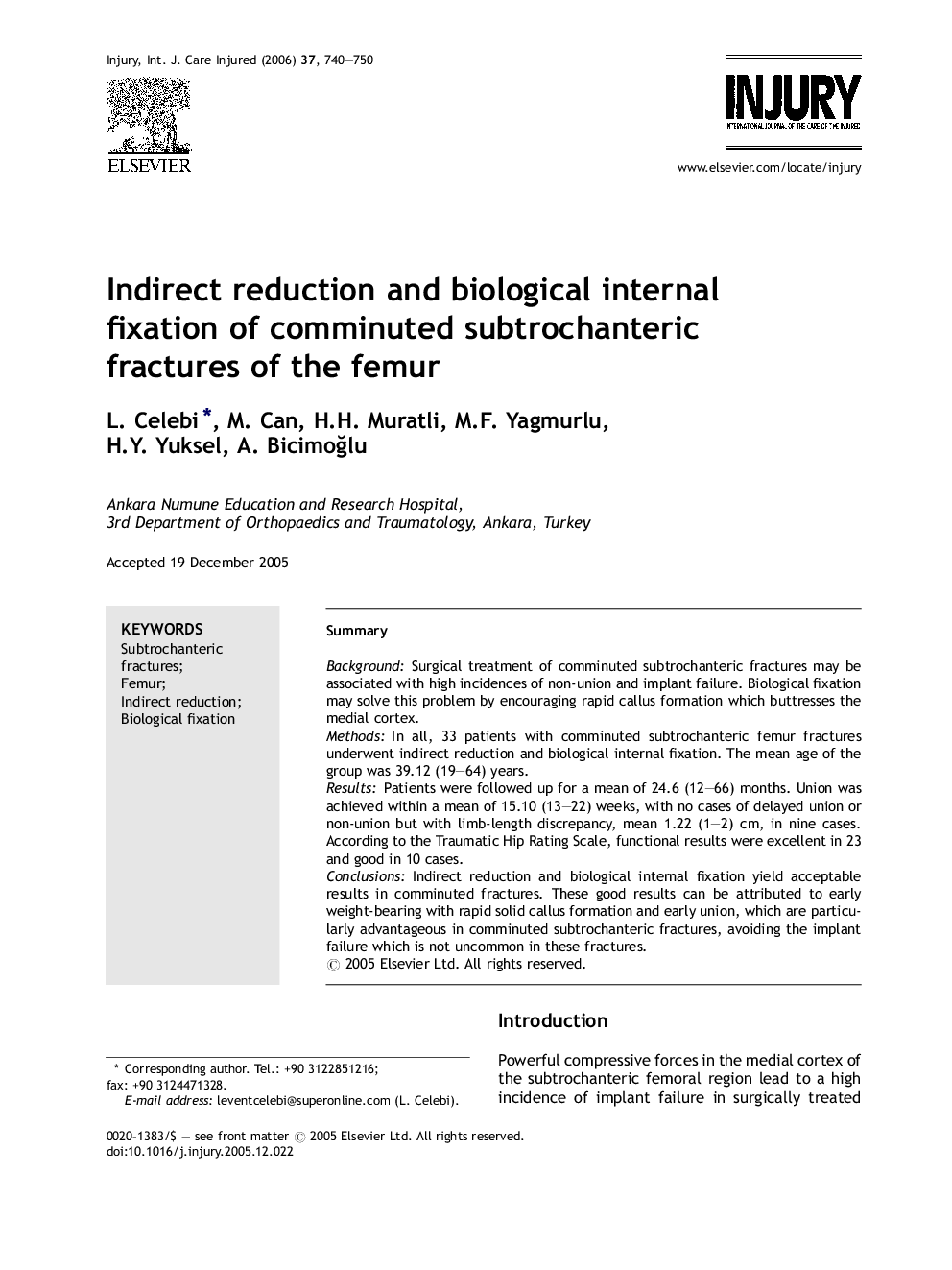| Article ID | Journal | Published Year | Pages | File Type |
|---|---|---|---|---|
| 3242912 | Injury | 2006 | 11 Pages |
SummaryBackgroundSurgical treatment of comminuted subtrochanteric fractures may be associated with high incidences of non-union and implant failure. Biological fixation may solve this problem by encouraging rapid callus formation which buttresses the medial cortex.MethodsIn all, 33 patients with comminuted subtrochanteric femur fractures underwent indirect reduction and biological internal fixation. The mean age of the group was 39.12 (19–64) years.ResultsPatients were followed up for a mean of 24.6 (12–66) months. Union was achieved within a mean of 15.10 (13–22) weeks, with no cases of delayed union or non-union but with limb-length discrepancy, mean 1.22 (1–2) cm, in nine cases. According to the Traumatic Hip Rating Scale, functional results were excellent in 23 and good in 10 cases.ConclusionsIndirect reduction and biological internal fixation yield acceptable results in comminuted fractures. These good results can be attributed to early weight-bearing with rapid solid callus formation and early union, which are particularly advantageous in comminuted subtrochanteric fractures, avoiding the implant failure which is not uncommon in these fractures.
